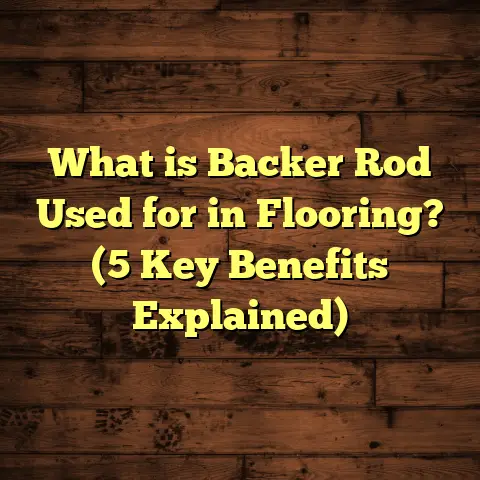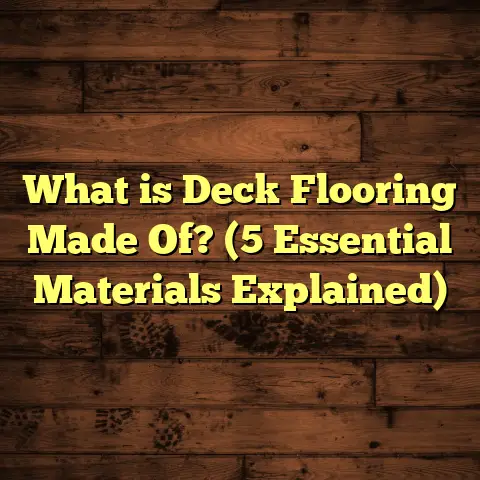What is Sheet Vinyl Flooring Made Of? (5 Key Components Revealed)
Let me take you back to one of the very first times I became genuinely fascinated by sheet vinyl flooring. It was about seven years ago when I was helping a close friend renovate her kitchen in Chicago. She had just bought a cozy 1920s bungalow that needed some serious updates, and the floor was one of the biggest challenges. The old tiles were cracked and uneven, and she wanted something that would handle heavy foot traffic — plus her two energetic kids — without breaking the bank. She kept mentioning “sheet vinyl” as a great option, praising its durability and ease of cleaning. I was intrigued but honestly didn’t know much about it beyond the basics. So, I rolled up my sleeves and started researching.
The more I learned, the more I realized how much goes into making sheet vinyl flooring what it is. It’s not just a simple plastic sheet slapped on the floor. There are multiple layers, each with a distinct role, carefully engineered to create a product that is flexible, durable, and visually appealing. Over years working as a contractor and flooring installer across various states, this knowledge has been invaluable. It’s helped me choose the right products for clients with different needs, budgets, and locations.
If you’re wondering what sheet vinyl flooring is made of and what makes it so popular, this article breaks down the five key components you’ll find in nearly every sheet vinyl floor on the market today. Along the way, I’ll share personal stories, data-backed insights, and practical tips to help you understand this versatile flooring option better.
What Is Sheet Vinyl Flooring Made Of?
Let’s start with a basic definition: Sheet vinyl flooring is a type of resilient flooring made from synthetic materials formed into large continuous sheets rather than small tiles or planks. These sheets are usually 6 to 12 feet wide and come in rolls long enough to cover entire rooms without seams or with very minimal seams.
The continuous nature of sheet vinyl gives it some big advantages:
- Seamless installation means fewer places for dirt and moisture to hide.
- Faster installation compared to tile or plank floors.
- Usually lower cost per square foot.
- Easy maintenance and excellent water resistance.
But beneath that smooth surface lies a complex structure made up of five main layers:
- The Backing Layer
- The Core Layer
- The Printed Design Layer
- The Wear Layer
- The Protective Coating or Finish
Each layer plays a unique role in making sheet vinyl durable, comfortable, and attractive. Let me take you through each one in detail.
1. Backing Layer: The Foundation of Stability
The backing layer is the bottom-most part of a sheet vinyl floor





